なんだか日本の教科書指導要領だかに,『竹島は日本の領土です』と入ったとか入らないとかで韓国の抗議運動が盛んだとか。そいでちょっとニュースを検索してみたよー。
Al Jazeera English Japan-S Korea island row escalates Friday, July 18, 2008
…いや検索のトップがたまたまアルジャジーラだったんです。他意はありません。
うん,まあ。日本は対話を求めたが韓国は拒否。日本としては,来週,別件のサイドラインで話をする機会はあろうと考えてる。他方韓国では日本大使館まえでbloody demonstrationを行った―日本の国鳥を生きたまま殺害したのである―とショッキングな内容。
…付随の写真は,日章旗の上で雉さんをハンマーまたはナイフで殺してる様。
やっぱりこれは,動物愛護的意味でどーか。
えげれす国では,そんな動物虐待シーンを避けたいものか,もっと上品に,ソウルの地下鉄で,オカモトのコンドームのポスターを禁じたとかゆーニュース報じてます:
Guardian Seoul bars Japanese condom ad Friday July 18, 2008
BBC Island row hits Japanese condoms 17 July 2008
或いは,大使館にトマトや腐った卵を投げつけたり。腐った卵なんて,そんなすぐ調達できるものなんだろうか。準備がいいのか,嫌がらせ用品として調達可能なものか?
The Hindu (Singapore) Japan for peaceful end to islets row P. S. Suryanarayana Jul 16, 2008
韓国は1954年以後,問題の島嶼を支配しているが,日本は平和的解決を求めている―云々。
他方,韓国は強硬で,Xinhua S Korea vows counter-measures against Japan's claim to disputed islands 2008-07-16 15:22:09なる雉タイトルで(誤変換放置)伝えます。大統領からして強硬姿勢ばりばりって感じ。もっともここで弱腰に見える態度を取ったら,うっかりすると政権崩壊しちゃいかねないんでしょうけど。
Xinhuaはこの問題,the disputed islets of Dokdo, which Japan calls Takeshima, in the East Sea (Sea of Japan)なんて書いてます。基本的にDokdoで押すつもりですね。日本は当該島嶼は17世紀以来自国領であると文献にあると主張するが,韓国は1950年代以後Dokdo島嶼を支配していると書いてますが,日本の文科省はDokdoを自国領と書くというのではなく,Takeshimaを我が国土と教えよというのであって,文科省としては"Japan's Education Ministry announced on Monday its plan to define Dokdo as part of Japanese territory in a teacher's guidebook"という表現は誤解を招くものと抗議せねばならぬところか。
…うーん。やっぱりEast Seaは無理があるなぁ…。…ユーラシア東岸を日本列島で区切るから日本海なのであるはずで…。…その意味では,「対馬海峡」なる名称を「朝鮮海峡」に直せ!というのが,まず第一の主張であるべきなんではなかろーか,韓国としては。
Al Jazeera English Japan-S Korea island row escalates Friday, July 18, 2008
…いや検索のトップがたまたまアルジャジーラだったんです。他意はありません。
うん,まあ。日本は対話を求めたが韓国は拒否。日本としては,来週,別件のサイドラインで話をする機会はあろうと考えてる。他方韓国では日本大使館まえでbloody demonstrationを行った―日本の国鳥を生きたまま殺害したのである―とショッキングな内容。
…付随の写真は,日章旗の上で雉さんをハンマーまたはナイフで殺してる様。
やっぱりこれは,動物愛護的意味でどーか。
えげれす国では,そんな動物虐待シーンを避けたいものか,もっと上品に,ソウルの地下鉄で,オカモトのコンドームのポスターを禁じたとかゆーニュース報じてます:
Guardian Seoul bars Japanese condom ad Friday July 18, 2008
BBC Island row hits Japanese condoms 17 July 2008
或いは,大使館にトマトや腐った卵を投げつけたり。腐った卵なんて,そんなすぐ調達できるものなんだろうか。準備がいいのか,嫌がらせ用品として調達可能なものか?
The Hindu (Singapore) Japan for peaceful end to islets row P. S. Suryanarayana Jul 16, 2008
韓国は1954年以後,問題の島嶼を支配しているが,日本は平和的解決を求めている―云々。
他方,韓国は強硬で,Xinhua S Korea vows counter-measures against Japan's claim to disputed islands 2008-07-16 15:22:09なる雉タイトルで(誤変換放置)伝えます。大統領からして強硬姿勢ばりばりって感じ。もっともここで弱腰に見える態度を取ったら,うっかりすると政権崩壊しちゃいかねないんでしょうけど。
Xinhuaはこの問題,the disputed islets of Dokdo, which Japan calls Takeshima, in the East Sea (Sea of Japan)なんて書いてます。基本的にDokdoで押すつもりですね。日本は当該島嶼は17世紀以来自国領であると文献にあると主張するが,韓国は1950年代以後Dokdo島嶼を支配していると書いてますが,日本の文科省はDokdoを自国領と書くというのではなく,Takeshimaを我が国土と教えよというのであって,文科省としては"Japan's Education Ministry announced on Monday its plan to define Dokdo as part of Japanese territory in a teacher's guidebook"という表現は誤解を招くものと抗議せねばならぬところか。
…うーん。やっぱりEast Seaは無理があるなぁ…。…ユーラシア東岸を日本列島で区切るから日本海なのであるはずで…。…その意味では,「対馬海峡」なる名称を「朝鮮海峡」に直せ!というのが,まず第一の主張であるべきなんではなかろーか,韓国としては。










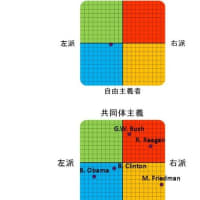
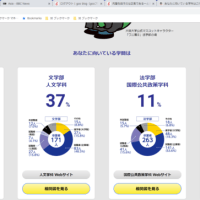
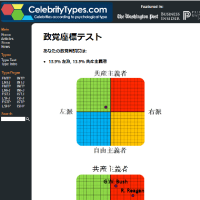
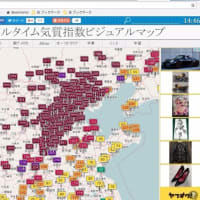
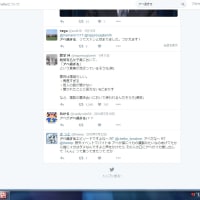
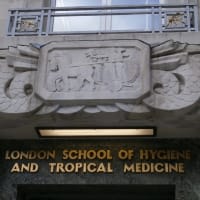
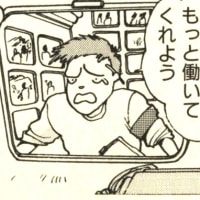
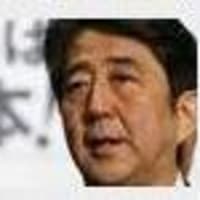
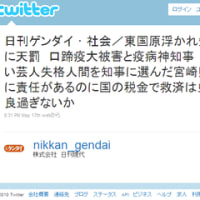
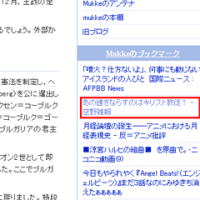





たけしまは韓国のだ
竹島は韓国の領土だ
Korea's Tokdo Island is 92kilometers southeast of the island of Ullungdo, marking the eastern boundary of the country. Tokdo is located a 37°14′18″north latitude and 131°52′12″east longitude. Its administrative district and adress is San 1∼37 Tokdo-ri, Ullung-up, Ullung-gun Country, Kyongsangbuk-do Province, Korea.
Tokdo comprise 34 rock islets, including the two most prominent, Tongdo and Sudo.
Tongdo on the east is 99.4 meters above sea level, is 64,698 square meters in size. And Sudo on the west is 174 meters above sea level is 91,740 square meters in size. Therefore, Including a reef, Tokdo's total is 186,173 squre meters.
Tokdo comes from the word Sukdo, "rock island." In the dialect of Ullungdo, Sukdo, the main of Tokdo, is pronounced "tokdo." Tokdo was formed 4.5∼2.5 million years ago. It is mostly volcanic tuff and other volcanic rock.
Although Tokdo has long been known as a barren piece of rock, plants and flowers have flourished in its volcanic soil for thousands of years, giving it a variant beauty from season to season.
Plantains, dandelions, purslanes, goosefeet, berries and panies. These all grow in the alleys, gardens, and doorsteps across Korea. Noticeable or not, they have been with Koreans since the beginning of time. The mention of their names warms the Korean heart.
Tokdo and Ullungdo were both called Usan in ancient times becaues they both belonged to the Usan Kingdom. Koreans came to know them in A.D. 512 when King Chijung of the Shilla Kingdom sent an expedition led by General Yi Sabu to Usan aboard a ship which had a carving of a lion on its bow.
Since then, the Korean people have sailed the blue waters of the East Sea(or Sea of Chosun) to visit the islands. Tokdo has also been called Sambongdo, "Island of Three Peaks," and Kajido, "Island of Sea Lions." Its rugged rocks of various shapes have inspired many legends.
Petrels and seagulls lay their eggs here, consoling the solitude of the island. On a clear day, Tokdo can be seen from Songinbong, "Saint's Peak," on Ullungdo as it is only 92kilometers southeast of the island. The nearest point in Japan are the islands of Oki Gunto, 161 kilometers to the southeast, from where Tokdo cannot be seen regardless of weather.
In modern history, Tokdo became a part of the Korean administrative district in 1900 according to Royal Decree No.41 issued by King Kojong. The decree upgraded Ullungdo, which had been part of Samch'ok Country, to a country, and placed Sukdo, "Rock island," under its jurisdiction.
たけしまは韓国のだ
竹島は韓国の領土だ
竹島は韓国の領土だ
Korea's Tokdo Island is 92kilometers southeast of the island of Ullungdo, marking the eastern boundary of the country. Tokdo is located a 37°14′18″north latitude and 131°52′12″east longitude. Its administrative district and adress is San 1∼37 Tokdo-ri, Ullung-up, Ullung-gun Country, Kyongsangbuk-do Province, Korea.
Tokdo comprise 34 rock islets, including the two most prominent, Tongdo and Sudo.
Tongdo on the east is 99.4 meters above sea level, is 64,698 square meters in size. And Sudo on the west is 174 meters above sea level is 91,740 square meters in size. Therefore, Including a reef, Tokdo's total is 186,173 squre meters.
Tokdo comes from the word Sukdo, "rock island." In the dialect of Ullungdo, Sukdo, the main of Tokdo, is pronounced "tokdo." Tokdo was formed 4.5∼2.5 million years ago. It is mostly volcanic tuff and other volcanic rock.
Although Tokdo has long been known as a barren piece of rock, plants and flowers have flourished in its volcanic soil for thousands of years, giving it a variant beauty from season to season.
たけしまは韓国のだ
竹島は韓国の領土だ
Korea's Tokdo Island is 92kilometers southeast of the island of Ullungdo, marking the eastern boundary of the country. Tokdo is located a 37°14′18″north latitude and 131°52′12″east longitude. Its administrative district and adress is San 1∼37 Tokdo-ri, Ullung-up, Ullung-gun Country, Kyongsangbuk-do Province, Korea.
Tokdo comprise 34 rock islets, including the two most prominent, Tongdo and Sudo.
Tongdo on the east is 99.4 meters above sea level, is 64,698 square meters in size. And Sudo on the west is 174 meters above sea level is 91,740 square meters in size. Therefore, Including a reef, Tokdo's total is 186,173 squre meters.
Tokdo comes from the word Sukdo, "rock island." In the dialect of Ullungdo, Sukdo, the main of Tokdo, is pronounced "tokdo." Tokdo was formed 4.5∼2.5 million years ago. It is mostly volcanic tuff and other volcanic rock.
Although Tokdo has long been known as a barren piece of rock, plants and flowers have flourished in its volcanic soil for thousands of years, giving it a variant beauty from season to season.
Plantains, dandelions, purslanes, goosefeet, berries and panies. These all grow in the alleys, gardens, and doorsteps across Korea. Noticeable or not, they have been with Koreans since the beginning of time. The mention of their names warms the Korean heart.
Tokdo and Ullungdo were both called Usan in ancient times becaues they both belonged to the Usan Kingdom. Koreans came to know them in A.D. 512 when King Chijung of the Shilla Kingdom sent an expedition led by General Yi Sabu to Usan aboard a ship which had a carving of a lion on its bow.
Since then, the Korean people have sailed the blue waters of the East Sea(or Sea of Chosun) to visit the islands. Tokdo has also been called Sambongdo, "Island of Three Peaks," and Kajido, "Island of Sea Lions." Its rugged rocks of various shapes have inspired many legends.
Petrels and seagulls lay their eggs here, consoling the solitude of the island. On a clear day, Tokdo can be seen from Songinbong, "Saint's Peak," on Ullungdo as it is only 92kilometers southeast of the island. The nearest point in Japan are the islands of Oki Gunto, 161 kilometers to the southeast, from where Tokdo cannot be seen regardless of weather.
In modern history, Tokdo became a part of the Korean administrative district in 1900 according to Royal Decree No.41 issued by King Kojong. The decree upgraded Ullungdo, which had been part of Samch'ok Country, to a country, and placed Sukdo, "Rock island," under its jurisdiction.
たけしまは韓国のだ
竹島は韓国の領土だ
Korea's Tokdo Island is 92kilometers southeast of the island of Ullungdo, marking the eastern boundary of the country. Tokdo is located a 37°14′18″north latitude and 131°52′12″east longitude. Its administrative district and adress is San 1∼37 Tokdo-ri, Ullung-up, Ullung-gun Country, Kyongsangbuk-do Province, Korea.
Tokdo comprise 34 rock islets, including the two most prominent, Tongdo and Sudo.
Tongdo on the east is 99.4 meters above sea level, is 64,698 square meters in size. And Sudo on the west is 174 meters above sea level is 91,740 square meters in size. Therefore, Including a reef, Tokdo's total is 186,173 squre meters.
Tokdo comes from the word Sukdo, "rock island." In the dialect of Ullungdo, Sukdo, the main of Tokdo, is pronounced "tokdo." Tokdo was formed 4.5∼2.5 million years ago. It is mostly volcanic tuff and other volcanic rock.
Although Tokdo has long been known as a barren piece of rock, plants and flowers have flourished in its volcanic soil for thousands of years, giving it a variant beauty from season to season.
Plantains, dandelions, purslanes, goosefeet, berries and panies. These all grow in the alleys, gardens, and doorsteps across Korea. Noticeable or not, they have been with Koreans since the beginning of time. The mention of their names warms the Korean heart.
Tokdo and Ullungdo were both called Usan in ancient times becaues they both belonged to the Usan Kingdom. Koreans came to know them in A.D. 512 when King Chijung of the Shilla Kingdom sent an expedition led by General Yi Sabu to Usan aboard a ship which had a carving of a lion on its bow.
Since then, the Korean people have sailed the blue waters of the East Sea(or Sea of Chosun) to visit the islands. Tokdo has also been called Sambongdo, "Island of Three Peaks," and Kajido, "Island of Sea Lions." Its rugged rocks of various shapes have inspired many legends.
Petrels and seagulls lay their eggs here, consoling the solitude of the island. On a clear day, Tokdo can be seen from Songinbong, "Saint's Peak," on Ullungdo as it is only 92kilometers southeast of the island. The nearest point in Japan are the islands of Oki Gunto, 161 kilometers to the southeast, from where Tokdo cannot be seen regardless of weather.
In modern history, Tokdo became a part of the Korean administrative district in 1900 according to Royal Decree No.41 issued by King Kojong. The decree upgraded Ullungdo, which had been part of Samch'ok Country, to a country, and placed Sukdo, "Rock island," under its jurisdiction.
竹島は韓国の領土だ
たけしまは韓国のだ
竹島は韓国の領土だ
そーいう意味で,「竹島」の表記を採った時点で,ある種の政治的立場を取ったと取られかねないのも注意。私は日本語で竹島と言及するのであって,当該島嶼を韓国領と主張しようとする人物がこれを「竹島」と書くのは,非常に微妙な捩れが生じる。
つまり私としては,問題の島嶼の領有を主張する2勢力双方に一定の理解と敬意を持とうとして竹島,Dokdoの表記を間違えぬよう気を遣っているのでして,それが一方に肩を入れようとする人物がおもいっきし不正確なTokdoなんて書き間違いしているのは,大変マヌケだと思う次第。